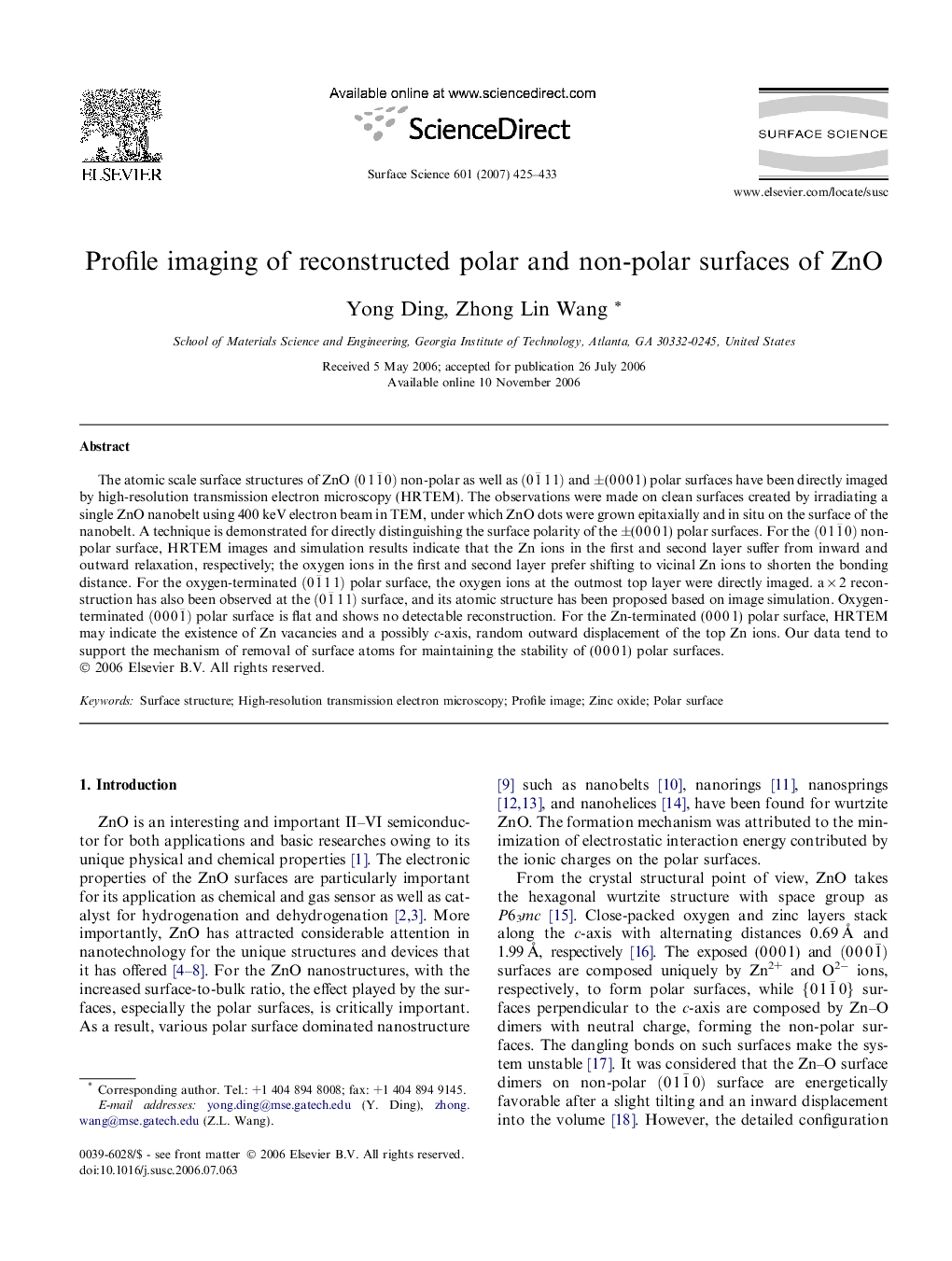| Article ID | Journal | Published Year | Pages | File Type |
|---|---|---|---|---|
| 5426152 | Surface Science | 2007 | 9 Pages |
Abstract
The atomic scale surface structures of ZnO (011¯0) non-polar as well as (01¯11) and ±(0 0 0 1) polar surfaces have been directly imaged by high-resolution transmission electron microscopy (HRTEM). The observations were made on clean surfaces created by irradiating a single ZnO nanobelt using 400 keV electron beam in TEM, under which ZnO dots were grown epitaxially and in situ on the surface of the nanobelt. A technique is demonstrated for directly distinguishing the surface polarity of the ±(0 0 0 1) polar surfaces. For the (011¯0) non-polar surface, HRTEM images and simulation results indicate that the Zn ions in the first and second layer suffer from inward and outward relaxation, respectively; the oxygen ions in the first and second layer prefer shifting to vicinal Zn ions to shorten the bonding distance. For the oxygen-terminated (01¯11) polar surface, the oxygen ions at the outmost top layer were directly imaged. a Ã 2 reconstruction has also been observed at the (01¯11) surface, and its atomic structure has been proposed based on image simulation. Oxygen-terminated (0001¯) polar surface is flat and shows no detectable reconstruction. For the Zn-terminated (0 0 0 1) polar surface, HRTEM may indicate the existence of Zn vacancies and a possibly c-axis, random outward displacement of the top Zn ions. Our data tend to support the mechanism of removal of surface atoms for maintaining the stability of (0 0 0 1) polar surfaces.
Related Topics
Physical Sciences and Engineering
Chemistry
Physical and Theoretical Chemistry
Authors
Yong Ding, Zhong Lin Wang,
